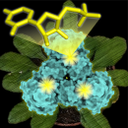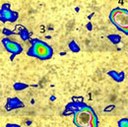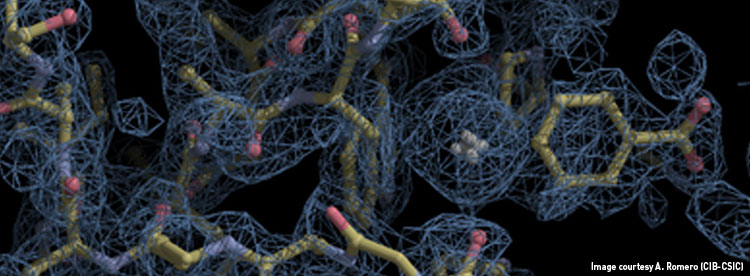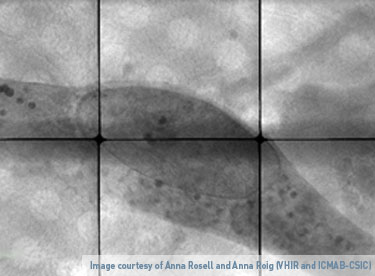
A group of researchers from France has been able to create and guide skyrmions in magnetic tracks. These nanoscale magnetic textures are promising information carriers with great potential in future data storage and processing devices. Experiments at the CIRCE-PEEM beamline of the ALBA Synchrotron enabled to image how skyrmions move along tracks written with helium ions.

A study from several Italian institutions and the ALBA Synchrotron suggest crystalline calcium carbonate as a precursor of hydroxyapatite in the process of bone formation. Since hydroxyapatite is a mineral constituting 70% of the mass of bone, these findings may have potential applications in the development of new therapeutic approaches in bone cancer. Thanks to the MISTRAL beamline at ALBA, researchers were able to create a 3D tomogram of human cells and visualize calcium depositions inside them.

A research team from the Biomedicine Institute of Valencia (IBV-CSIC) and from the CIBER of Rare Diseases (CIBERER), in collaboration with the Universität Kaiserslautern in Germany, has studied the ATC protein, an essential enzyme for the biosynthesis of pyrimidines, the building blocks of the genetic material. The structural determination was carried out at the ESRF synchrotron and at the XALOC beamline of ALBA, devoted to macromolecular crystallography. The structural data, combined with other analysis, has allowed researchers to describe the functioning mechanism of the enzyme, opening the venue for new strategies to design herbicides and antitumoral compounds.

Researchers from the UAB and IDIBELL have analysed Alzheimer’s disease brain samples at the ESRF and ALBA Synchrotron to characterise two types of amyloid plaques with differences in metal ion composition and in their levels of oxidised lipids. The results could lead to new insights into the development of the pathology.

In a recent publication, researchers from French and Spanish Institutions used the combination of two synchrotron light characterization techniques to study Chinese blue-and-white Ming porcelains, which are decorated under the glaze with Cobalt-based blue pigments, and produced during a one-step firing at high temperatures. They were able to identify the firing temperature by determining the porcelain’s pigments and the reduction-oxidation media conditions during their production. The approach they used can also be applied on a broad range of modern and archaeological ceramics to elucidate their production technology.






